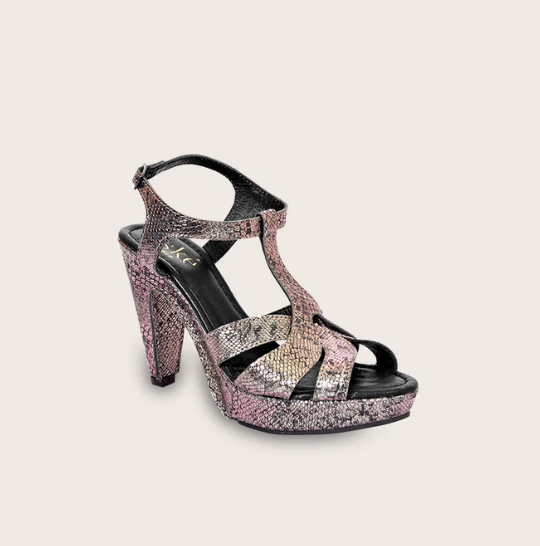Leather footwear has been a staple in fashion and practicality for centuries, standing the test of time as a versatile and enduring material. From classic leather boots to stylish loafers, understanding the intricacies of leather footwear goes beyond mere aesthetics and stands for ultimate sophistication.
The Craftsmanship Behind Leather Footwear:
Leather footwear is a testament to skilled craftsmanship. Each pair is meticulously crafted by artisans who have honed their skills over the years, blending traditional techniques with modern innovations. From pattern cutting to stitching, understanding the intricate process involved in creating leather footwear enhances our appreciation for the artistry behind each pair.
- Meticulous Pattern Cutting: The craftsmanship of leather footwear begins with the precise art of pattern cutting. Skilled artisans, often equipped with years of experience, meticulously create patterns that serve as templates for each part of the shoe, from the upper to the sole.
- Stitching Techniques: The choice of stitching technique is a hallmark of skilled craftsmanship in leather footwear. Various methods, such as Goodyear welt or Blake stitch, are employed to join different parts of the shoe seamlessly. Each stitch is strategically placed to enhance durability and flexibility.
- Lasting Process:The lasting process involves shaping the shoe around a form known as a last. Craftsmen carefully mold the leather over the last, determining the size, shape, and overall structure of the footwear. This step is crucial for achieving the desired fit and form.
- Quality Leather Selection: The choice of leather is a cornerstone of leather footwear craftsmanship. Skilled artisans meticulously select high-quality hides, considering factors such as suppleness, grain pattern, and overall aesthetics. The type of leather chosen greatly influences the final look and feel of the shoes.
- Finishing Touch: The finishing touches in leather footwear encompass a range of details, from hand-burnished edges to intricate broguing or decorative stitching. These final embellishments add character and refinement to the shoes, showcasing the artisan's attention to detail.
- Quality Control: Rigorous quality control is an integral part of the craftsmanship process. Each pair of leather shoes undergoes thorough inspection to ensure that it meet the highest standards. This includes checking for uniform stitching, proper alignment, and the absence of any imperfections.
- Incorporation of Modern Techniques: While traditional craftsmanship forms the foundation, modern techniques are often incorporated to enhance efficiency and precision. Computer-aided design (CAD) is used for pattern making, and advanced machinery assists in cutting and stitching, ensuring a harmonious blend of tradition and technology.
Types of leather:
- Top-Grain Leather: Top-grain leather is known for its durability and smooth surface. It is derived from the outer layer of the hide and undergoes a sanding process to remove imperfections, resulting in a clean and uniform appearance. It is commonly used in crafting high-quality leather footwear due to its strength and versatility.
- Full-Grain Leather: Full-grain leather is considered the highest quality and most natural form of leather. Known for its breathability and patina development over time, full-grain leather footwear ages gracefully.
- Genuine Leather: While the term "genuine leather" might sound like an assurance of quality, it is actually a broad category that includes various qualities of leather. It is made from layers of low-quality hides and is often processed to achieve a consistent appearance. While genuine leather shoes can be more affordable, they may lack the durability and long-term quality of top-grain or full-grain options.
- Nubuck Leather:Nubuck leather is created by sanding or buffing the outer layer of top-grain or full-grain leather, resulting in a suede-like texture. It is prized for its softness and luxurious feel. Nubuck leather footwear boasts a velvety surface, offering a unique texture and appearance. However, it requires careful maintenance to prevent staining and water damage due to its softer nature.
- Exotic Leather: Exotic leather encompasses hides from non-traditional sources, such as snakes, alligators, or ostriches. These leathers are characterized by distinctive patterns and textures unique to each species. Footwear made from exotic leather is highly sought-after for its rarity and luxurious appeal.
- Bonded Leather: Bonded leather is composed of scraps and fibres bonded together with adhesives. While it contains some genuine leather, it is considered a lower-quality option due to the synthetic materials used in the bonding process.
Care Tips for Leather Footwear:
Proper care is essential to maintaining the longevity and appearance of leather footwear. From cleaning to conditioning, this section will provide a comprehensive guide on how to care for your leather shoes. Tips on storing, polishing, and protecting against the elements will ensure that your investment in leather footwear remains a timeless and stylish choice for years to come.
Conclusion
Whether you are a seasoned leather enthusiast or a newcomer to the world of quality leather footwear, gaining a deeper understanding of these aspects will not only enhance your appreciation for leather shoes but also guide you in making informed choices that align with your style preferences and values. As we navigate the ever-changing landscape of fashion, leather footwear remains a steadfast and classic choice that transcends fleeting trends, check out our collection at eske.

